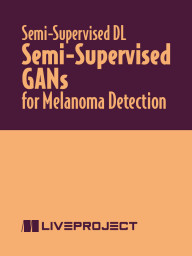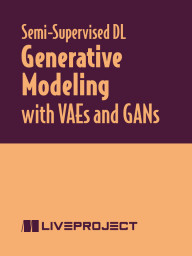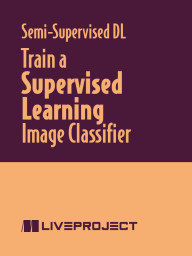projects by Olga Petrova
Semi-Supervised Deep Learning with GANs for Melanoma Detection
In this liveProject series, you’ll take on the role of a computer vision engineer creating a proof of concept for an image recognition mobile app—one with world-changing potential. You’ll build a machine learning model that can identify cancerous moles in low-resolution photos from a phone’s camera. To produce the model, you’ll work through different supervised, unsupervised, and semi-supervised learning techniques, and use data augmentation to improve your training dataset. Each liveProject in this series covers a different deep learning approach for you to build a toolbox of skills that are most relevant to your career.
Semi-Supervised GANs for Melanoma Detection
In this liveProject, you’ll utilize PyTorch and powerful semi-supervised learning techniques to construct an advanced image classifier that can tell whether a 32x32 pixel photo of a mole is melanoma-positive—despite working with a very small labelled dataset. You’ll set up your image preprocessing pipeline, feed data into your PyTorch model, and then train a semi-supervised GAN model on both labeled and unlabeled datasets.
Generative Modeling with VAEs and GANs
In this liveProject, you’ll utilize unlabeled data and unsupervised machine learning techniques to build and train data generative models. You’ll employ generative modeling, such as a variational autoencoder (VAE) that can generate new images by sampling from the latent distribution. You’ll then use an unsupervised generative adversarial network to generate new images.
Train a Supervised Learning Image Classifier
In this liveProject, you’ll use the popular deep learning framework PyTorch to train a supervised learning model on a dataset of melanoma images. Your final product will be a basic image classifier that can spot the difference between cancerous and non-cancerous moles. You’ll create a custom dataset class and data loaders that can handle image preprocessing and data augmentation, and even improve the accuracy of your model with transfer learning.



